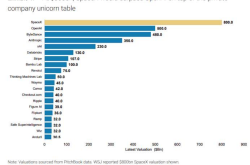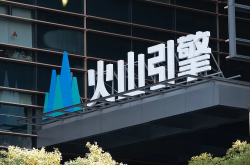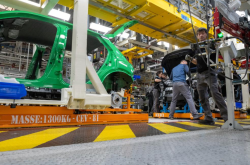AI Mobile Phones Need to "Break Away"
![]() 06/30 2025
06/30 2025
![]() 700
700
Large models are abundant on the market, yet it's challenging to conceal the underwhelming user experience. Is niche deep diving the way out?
In the third year of the AI boom, mobile phone manufacturers have ventured into deeper waters.
Recently, Huawei unveiled the HarmonyOS Intelligence Framework at HDC2025, and Huawei Xiaoyi is poised to become a system-level super intelligence agent.
Coincidentally, the upcoming Honor smartphone will also focus on AI capabilities, boasting to be the most potent AI-driven mobile phone.
Over the past year, domestic mobile phone makers have collectively strived in the AI domain, with Huawei Xiaoyi, Xiaomi Super Xiaoai, Honor YOYO, vivo Blue Heart XiaoV, and OPPO Xiaobu successively entering the market.
In the smartphone industry, the phenomenon of clustering around trendy topics is quite common.
A mobile phone industry analyst remarked, "In 2025, mobile phones without large models are destined to be phased out, much like phones without 5G in 2020."
It is a consensus within the industry that AI mobile phones will emerge as the next trend, yet it seems premature to hastily assert that AI will revolutionize traditional smartphones.
I. Old Wine in a New Bottle
From a definitional standpoint, "AI mobile phones" are not a novel concept.
In terms of hardware, in 2017, the second year after AlphaGO defeated Lee Sedol and caused a sensation, Huawei integrated an independent NPU (Neural Processing Unit) into the Kirin 970 chip.
Following Huawei, Apple, Qualcomm, MediaTek, and others followed suit, and mobile phone SoCs fully embraced the NPU era.
In terms of functionality, from facial recognition, voice assistants to image recognition, one-click beautification, etc., all these rely on the application of AI algorithms.
Hence, most existing mobile phones can already be deemed "AI mobile phones".
The distinction between current AI mobile phones and their predecessors might lie in the fact that major manufacturers have crammed large models into them.
For instance, Xiaomi's Super Xiaoai Classmate integrates DeepSeek-R1 and the self-developed lightweight large model MiLM.
Judging from the promotions of major manufacturers, the core capabilities of AI mobile phones integrated with large models are roughly concentrated in areas such as document summarization, image generation, real-time translation, and cross-application operations.
While it may seem dazzling, there doesn't appear to be a standout selling point that can ignite the consumer market.
AI image processing and real-time translation seem like mere enhanced versions of Meitu Xiuxiu and translation software. The speed and quality of document summarization and cross-application operations are far inferior to users doing it themselves.
As for the most crucial voice interaction, despite being able to convincingly imitate human voices, it still feels like an advanced toy at present and fails to generate productivity.
Moreover, current voice intelligence agents still make numerous embarrassing errors and misconceptions. The author personally tested and found that Doubao and Tencent Yuanbao both have issues such as confusing polyphones and misremembering dates during use.
From a consumer's perspective, users aren't concerned about what system or architecture a smartphone has; they care about whether it is user-friendly.
Today's AI mobile phones are more akin to "old wine in a new bottle," enhancing the original AI functions on mobile phones but still far from groundbreaking.
The IDC report predicts that shipments of China's new generation of AI mobile phones will reach 118 million units in 2025, with a year-on-year increase of 59.8%, accounting for 40.7% of the overall market. The growth rate is substantially higher than that of the overall smartphone market.
But if AI mobile phones cannot deliver a disruptive experience, then this growth might only be fleeting.
For example, VR glasses once exploded in popularity with their futuristic propaganda, attracting a massive influx of capital, technology giants, and startups.
However, the final products fell short of expectations, with high prices, limited application scenarios, and bulky designs deterring consumers.
After the boom subsided, the VR glasses market performance has been declining. Magic Leap, a startup that once raised $2 billion with the title of "VR pioneer," is now struggling on the brink of layoffs and disrepute.
While novel concepts can attract technology enthusiasts and early adopters to place orders first, if the functionalities cannot gain universal recognition, it remains difficult to sustain long-term success.
There are numerous such phenomena in the field of artificial intelligence. For example, AI Pin, which claimed to replace smartphones, and Rabbit R1, which focused on voice control software, both gained popularity for a while due to their cool concepts but quickly disappeared due to disappointing experiences.
If AI mobile phones don't want to repeat the same mistakes, perhaps they need functional experiences that exceed consumer expectations.
After all, the revolution in the mobile phone industry triggered by the iPhone wasn't due to Apple's promotional campaign but because its multi-touch screen was stunning enough.
Tesla Model 3 becoming one of the world's best-selling electric vehicles isn't because of the personal charisma of Elon Musk, the world's richest man, but because the Model 3's smart assisted driving experience is indeed impressive.
And if AI mobile phones aspire to trigger an industry revolution, they might have to overcome several more hurdles.
The first hurdle is balancing chip computing power and power consumption.
Running large models on mobile phones requires more powerful NPUs, and increasing chip computing power means increasing power consumption, which intuitively manifests as worse battery life.
In recent years, mobile phone manufacturers have exhausted all means to solve the problem of battery life.
Taking Xiaomi mobile phones as an example, the battery capacity of the Xiaomi 4 in 2014 was 3080mAh, and the charger power was 10W. By 2024, the battery capacity of the Xiaomi 15 has reached 5400mAh, and the charger power has reached 90W. Review agencies evaluated this value as "conservative".
And AI applications need to process a vast amount of complex data and perform real-time calculations, which require higher computing power and will also deplete the battery faster, affecting phone battery life.
The second hurdle is cost.
According to Zhou Wei, Dean of vivo AI Global Research Institute, the cost of calling a large cloud model once is approximately 0.012 to 0.015 yuan.
Assuming a mobile phone brand has 100 million users, and each person uses the AI function 10 times a day, the conversation cost alone may exceed 5 billion yuan per year.
Currently, users do not have the habit of paying for using large models.
The third hurdle is the lack of application software.
Currently, the most widely used AI mobile phones at the application level are still voice assistants. There are few types and lack of blockbuster applications. In the past, when the iPhone soared in popularity, in addition to its multi-touch technology, the massive application software provided by the App Store also contributed significantly.
Before overcoming these three hurdles, it might be challenging for AI mobile phones to persuade consumers to pay a premium for them.
The final question is: Since there are so many difficulties, why are mobile phone manufacturers still crowding into the internal competition of AI mobile phones?
II. "Niche" is "Mass"
Integrating large models into smartphones is essentially a mutual need of the two industries.
After more than a decade of development, the smartphone industry has long transitioned from a blue ocean to a red ocean. Mobile phone manufacturers are competing fiercely in performance, chips, screens, and pixels, and have reached a point where there is little left to compete about.
This is followed by homogenized competition. According to the report of the China Academy of Information and Communications Technology, in the first four months of 2025 alone, 163 new mobile phone models were launched in China.
If the logos of these mobile phones are covered, many consumers might struggle to differentiate between them.
The consequence of homogenization is that the replacement cycle for consumers becomes longer. After all, with excess performance and similar appearances, there isn't much difference between upgrading to a new smartphone or not.
Mobile phone manufacturers stuck in this bottleneck urgently need a "new story" that can revitalize the market, and the futuristic quality of large models perfectly fits the needs of the smartphone industry.
At the same time, large models are also under pressure from data center overload and high operating costs, and they urgently need to transition to edge computing.
As a result, the two industries found a perfect match. Smartphones have become the ideal edge side for large models, and large models have provided a "new story" for smartphones.
However, as mentioned earlier, for the story of AI mobile phones to become a reality, many obstacles still need to be overcome.
In this scenario, mobile phone manufacturers might consider shifting from "mass" to "niche," from pursuing "general AI mobile phones" that cater to all users to specialized "AI mobile phones" that focus on vertical functionalities.
There are three reasons for this approach.
The first is to alleviate technical pressure.
The main reason for the difficult application of large models is the limitation of resources such as chips, electricity, and data. When resources are limited and demand is unlimited, the best approach is to concentrate resources to achieve a breakthrough in one area.
The history of chip evolution has also followed a similar path: about 20% of the instructions in early computers undertook 80% of the work, which was complex and slow. Therefore, the RISC (Reduced Instruction Set Computer) concept was born – it only requires hardware to execute a very limited and most commonly used part of the instructions, and most complex operations use mature compilation technology and are synthesized by simple instructions.
After the birth of the RISC concept, the chip design industry entered a period of rapid development with a hundred flowers blooming. The development of large models can perhaps draw some lessons from this.
The second is to seek differentiation.
At the dawn of 5G technology, it was the hottest selling point for smartphones, but later 5G quickly became ubiquitous and became a standard configuration for smartphones, no longer a point of concern for consumers.
Especially in the current situation where the 5G boom has subsided, compared to 5G, consumers might be more concerned about the screen and battery life.
If AI mobile phones follow the same path again, homogenized competition will soon return. Instead, it's better to focus on vertical applications of large models.
For consumers, a well-functioning AI feature might be more appealing than ten intelligent agents that can be used but are half-assed.
Third, the "niche" market is not small.
A general rule is that the wider the coverage of a product, the more ordinary it will be because it needs to be universally applicable.
If AI large models are to cater to all users, their development direction must be simple and popular.
Simple and popular, in turn, means boring. Such functionalities might cover a larger audience but fail to increase user stickiness.
And in today's Chinese society, consumer demand is shifting from mass to individual.
Although the number of personalized consumer demand groups might be small, their consumer base is often willing to pay a higher premium for segmented needs.
From a universal perspective, it's difficult to understand why some consumers are willing to buy a Sam's Club membership for a 10-inch giant tiramisu. Similarly, it's hard to comprehend why people still queue up to buy LABUBU from Pop Mart even when its price has soared to over a thousand yuan.
Therefore, when it's challenging for general large models to solve technical and cost challenges, perhaps it's possible to deeply explore segmented tracks. After all, the market is large enough, and as long as it can accurately cater to some segmented needs, it can bring considerable growth.
At the same time, technological accumulation for segmented markets might have the opportunity to accumulate and help manufacturers break through the technical challenges of general large models.
Just like when Xiaomi first ventured into chip making, it underestimated the difficulty of chip research and development, leading to the lagging behind of the three-year-developed Pengpai S1 chip upon its launch, with only a six-month life cycle before it failed.
However, Xiaomi, which swallowed the bitter fruit of failure, did not disband its chip team but instead changed course and turned to the "small chip" business, developing ISP chips and imaging algorithms.
Finally, these technological accumulations were integrated into the Xuanjie O1 chip, breathing new life into Xiaomi's chip journey.
According to the Tianyancha APP, as of June 26, 2025, Xiaomi's total market value reached HK$1,476.508 billion.
In short, AI large model technology, like chip technology, not only involves industry advancements but also breakthroughs in engineering and even science, requiring long-term persistence and investment. It cannot be accomplished overnight.
Disclaimer: This article comments based on the company's statutory disclosure content and publicly available information, but the author does not guarantee the completeness and timeliness of the information.
Additional Note: The stock market is risky, and caution should be exercised when investing. This article does not constitute investment advice, and investors must make their own judgments on whether to invest.






